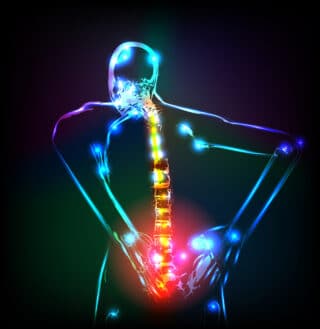
More Pain Management & Rehabilitation Articles
Future Trends In Spine Research

The United States is the world leader in medical innovation by far. Over the past 10 years more medical drug discoveries have occurred in the United States than in Japan, the UK, Germany, and Canada combined. Some of the most significant discoveries in medicine in our lifetime have come from the great engine of innovation that is the United States including MRI, CT scans, and cholesterol lowering “statin” drugs to name a few.
Plus, our understanding of normal and pathological processes of the spine has grown exponentially during the modern era. The future holds great promise for patients who suffer from painful and debilitating conditions of the spine and patients in the US will continue to enjoy first access to these cutting edge technologies.
Our understanding of the basic science of spine anatomy at the cellular level in both normal and pathological states will certainly expand in the next decade. Already we are learning more about the role of inflammatory mediators in the propagation of pain signals in acute back pain and how microscopic disruptions of our aging discs are associated with these painful episodes.
Understanding these inflammatory cascades offers greater opportunity to intervene medically to lessen the painful symptoms. Although we are a long way off from truly reversing the effects of time on our bodies we can at least offer treatments to reduce the pain and productive time lost when we are affected by these painful episodes. Look for medications to be more and more specific in their targets to intervene in the inflammatory process allowing for improved pain control with a reduction in side effects.
Surgery will continue to play an important role in the treatment of some severe conditions of the spine. The objectives will continue to be stabilization and decompression but the means to those ends will surely continue to evolve.
Already, many options for “minimally invasive” fusion of the spine are available allowing for a more speedy recovery, with shorter hospitalizations and blood loss. Nerve and spinal cord stimulators used in the treatment of refractory neuropathic pain will shrink in size as they grow in stimulation options.
A surgical option for painful degenerative disc disease which is safe and effective will one day materialize. Disc replacement surgery is being performed in very select individuals at this time and this will likely grow as surgical techniques improve. Look for improvements in accurate diagnosis of painful conditions of the spine to guide practitioners treatment options. The trend is towards a multi-disciplinary approach to treatment of spine disorders, particularly patients afflicted with chronically painful conditions.
These and other innovations will ultimately benefit all of humanity and will most certainly continue to be a source of growth for the United States for generations to come.
Other Articles You May Find of Interest...
- Pervasiveness Of Pain
- Effective Solutions for Lower Back Arthritis: Medial Branch Blocks and Radiofrequency Ablation
- Spinal Compression Fracture Treatment Options
- Hiatal Hernia: A Common Cause For Heartburn
- Can Electrical Stimulation Help My Pain?
- Prevent and Treat Osteoporosis
- Understanding Low Back Pain

















